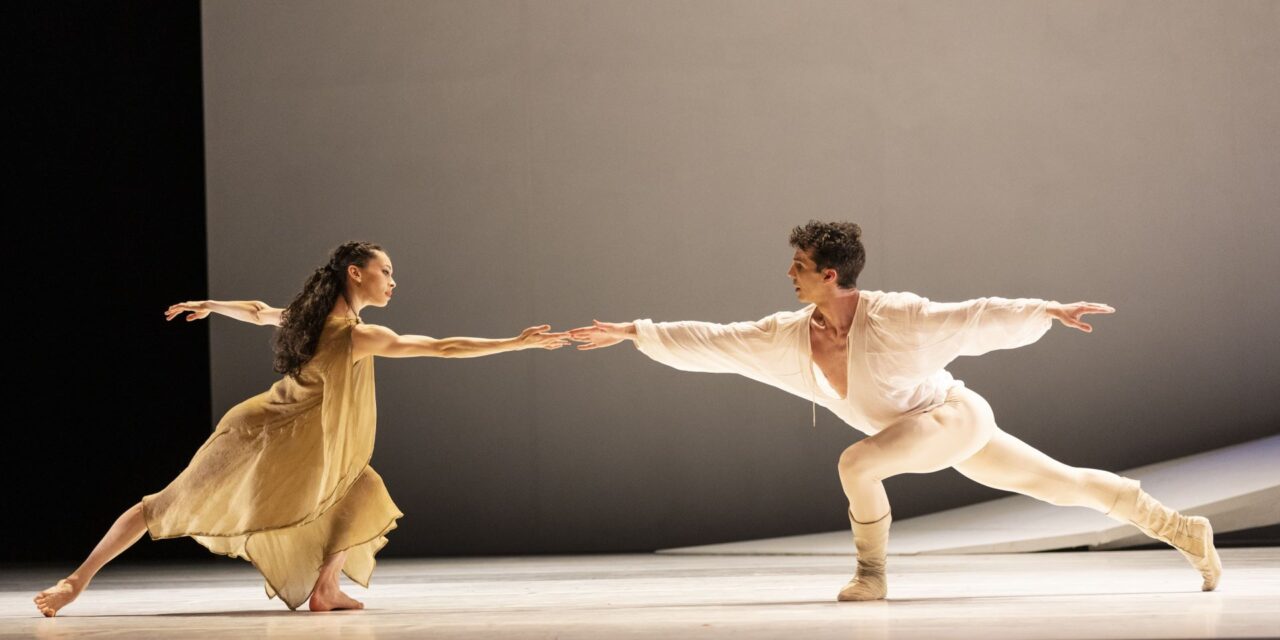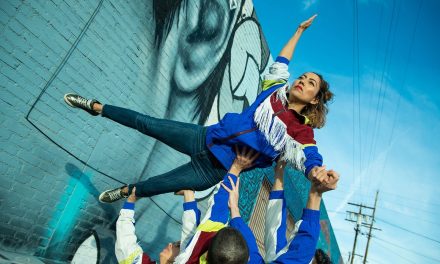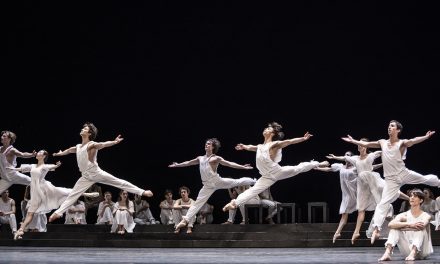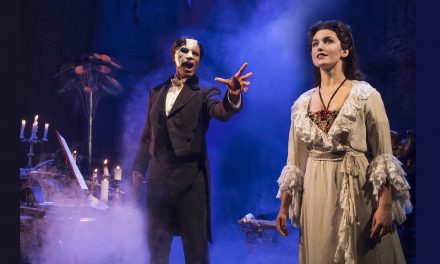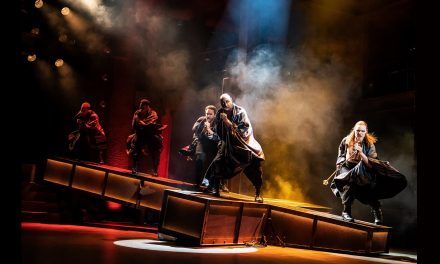On April 11-20, 2025 (Digital streaming on April 24-28) the Pacific Northwest Ballet, performed “Roméo et Juliette”, the classic play by William Shakespeare with the magnificent score by Serge Prokofiev. Stunningly directed and choreographed by Jean Christophe Maillot, this re-examined piece was originally done in 1996. Maillot’s “Romeo et Juliette”, appears so contemporary, even today, which he admits was inspired by Zeffirelli’s film. In his version, he wanted to be able to focus more on the human “language of love and the body” which makes it appear unencumbered by pomp, politics and classic history. The characterization of the dancers is supported and surrounded by the sparse sets, bold lighting and ethereal costuming. with the corps, as a kind of Greek Chorus, surrounding and supporting the characters and the play.
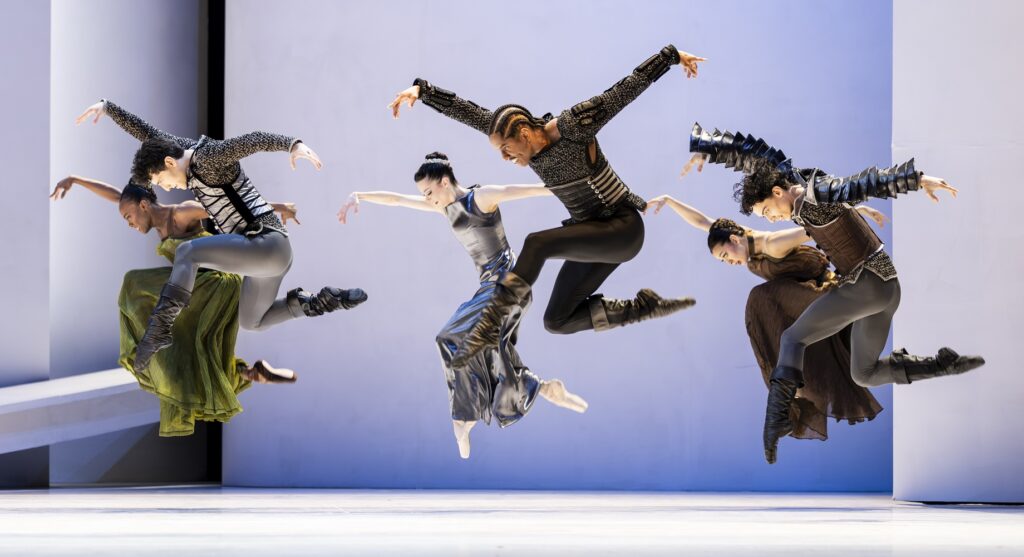
Pacific Northwest Ballet principal dancer Jonathan Batista (center) as Tybalt, with company dancers, in Jean-Christophe Maillot’s Roméo et Juliette – Photo by Angela Sterling.
The prologue of the first act introduces the leads and supporting characters, the sparse set designs of angles and levels in cream and white by Ernest Pignon-Ernest inspires painterly lighting with shards and whispers of light by Dominique Drillot. The wonderful costumes take a cue from the Renaissance period, with muted color palates of creams and gold, black and texture by Jérôme Kaplan. So when we finally move through the introduction of the Capulets and Montagues to the extraordinary balcony scene and love duet it was an intoxication of feelings. The vulnerability, and sensitivity, the youth and willingness that Clara Ruf Maldonado imbued in Juliet so passionately created a sense of blooming into womanhood. All this supported by the magnanimous Lucien Postlewaite with his captivating Romeo and his discovery of his Juliet, and in turn himself. This moment would not allow attention anywhere else but with these star-crossed lovers.
Maillot organically knows the essence of humanity and its discovery and has passed it on to his actor/dancers. This master of unique story-telling allowed the audience to feel these moments. He never allowed the mechanics of step-making to interfere with the unfolding and passion of the couple’s youthful play…which made this so exquisite, never wanting the first act to end.
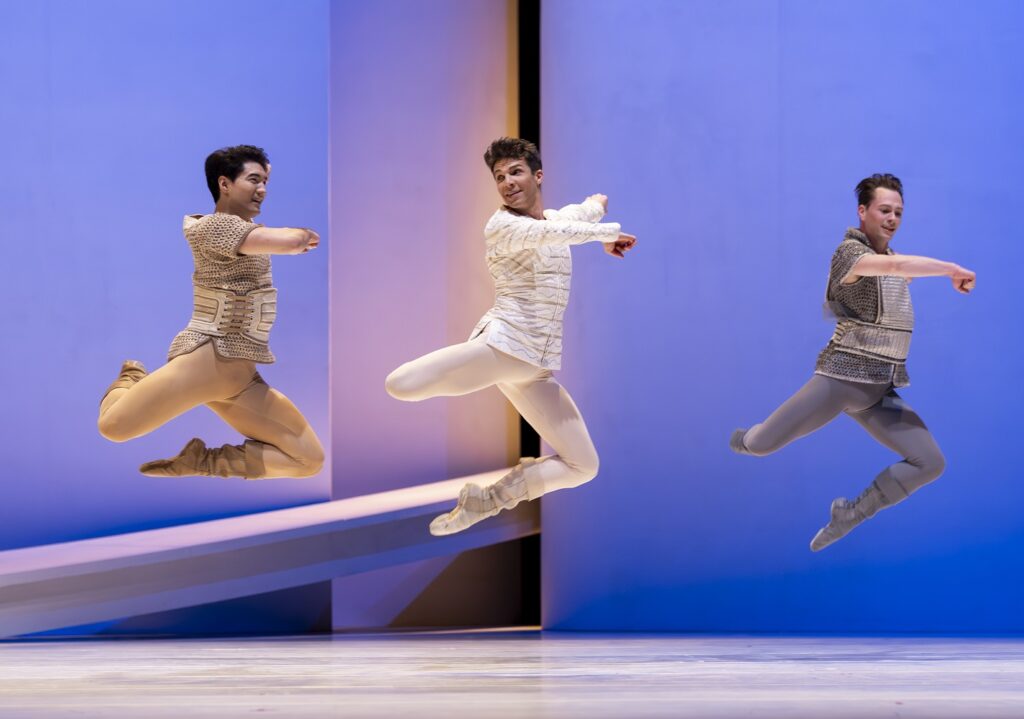
Pacific Northwest Ballet principal dancer Lucien Postlewaite (center) as Romeo, with soloist Christian Poppe as Benvolio and principal dancer Kyle Davis as Mercutio, in Jean-Christophe Maillot’s Roméo Et Juliette – Photo by Angela Sterling.
In the Second Act, Jonathan Batista’s dynamic hot-headed Tybalt to Kyle Davis’ jocular Mercutio is a powerful contrast, as Mercutio is undone by Tybalt. Then the dreamlike crime of passion in slow motion ensues between Romeo and Tybalt at the top of an angular plank. And with blinding emotion, and a bit of creative license, Romeo shrouds, strangles and drags Tybalt’s lifeless body down the plank. This triggers the wild and agonizing abandon of Lady Capulet played by the dazzling Elle Macy who, in a convulsive rage and mourning reaches and claws at Tybalt’s body, swirling in violent agony as the act ends and Tybalt and Mercutio’s shrouded bodies are dragged off as the curtain falls on the second act.
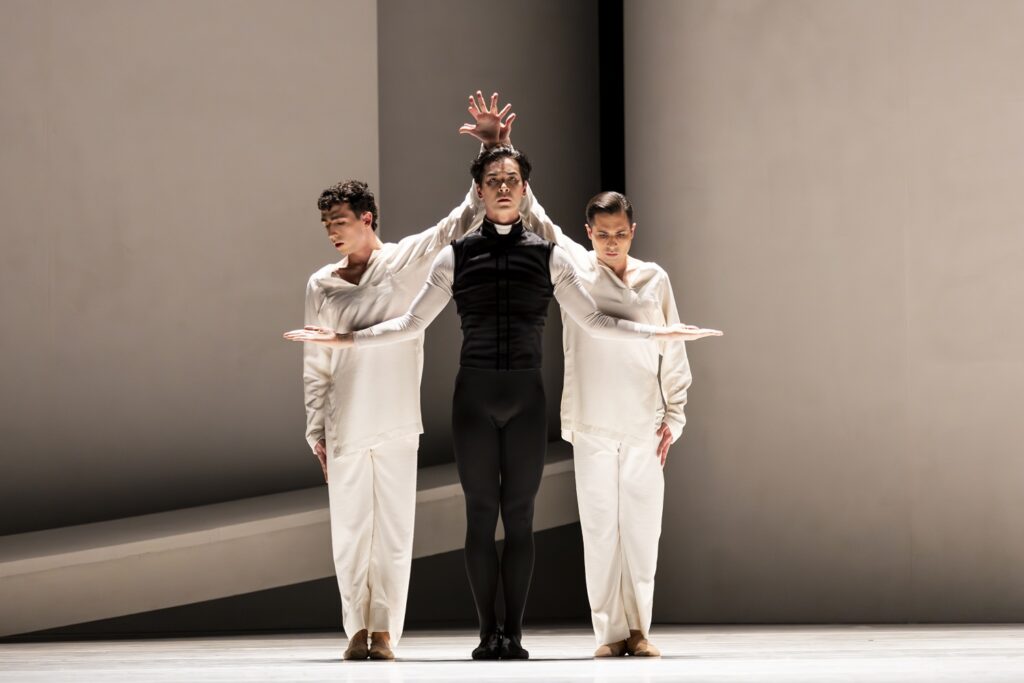
Pacific Northwest Ballet soloist Christopher D’Ariano (center) as Friar Laurence, with corps de ballet dancers Noah Martzall and Ryan Cardea, in Jean-Christophe Maillot’s Roméo et Juliette – Photo by Angela Sterling.
In the third act when light dawns on the angles of the set, Romeo must make the painful confession with agonizing honesty to Juliet’s rage and finally forgiveness. Postlewaite and Maldonado’s chemistry and understanding of these characters becomes a heart stopping and very real moment. The musicality as they reach towards the bed- a place of forgiveness, fades and passion takes over. Barely touching each other, it becomes one of the most erotic love scenes, so intelligent, and wise in its construction. It is fulfilled with such artistry one is transformed at that moment of hate and love.
The starkness of the lighting and the sets accentuate the agony and takes on the feeling of a tomb. In that environment, the Acolytes, Ryan Cardea and Noah Martzall, supporting Friar Lawrence, beautifully played by Christopher D’Ariano, do a pas de trois evoking powerful religious symbolism, rising, lifting and moving in and out of a kind of Passion play. It effectively creates a filmic change of space and moods. Like waves, they move, echoing Juliette’s symbolic Crucifix, counter balancing and seemingly foretelling the future. As she glides back, lifts and collapses, it appears to foretell the impending future. Maillot’s ability to find the pain and emotion through the movement is quite astounding.
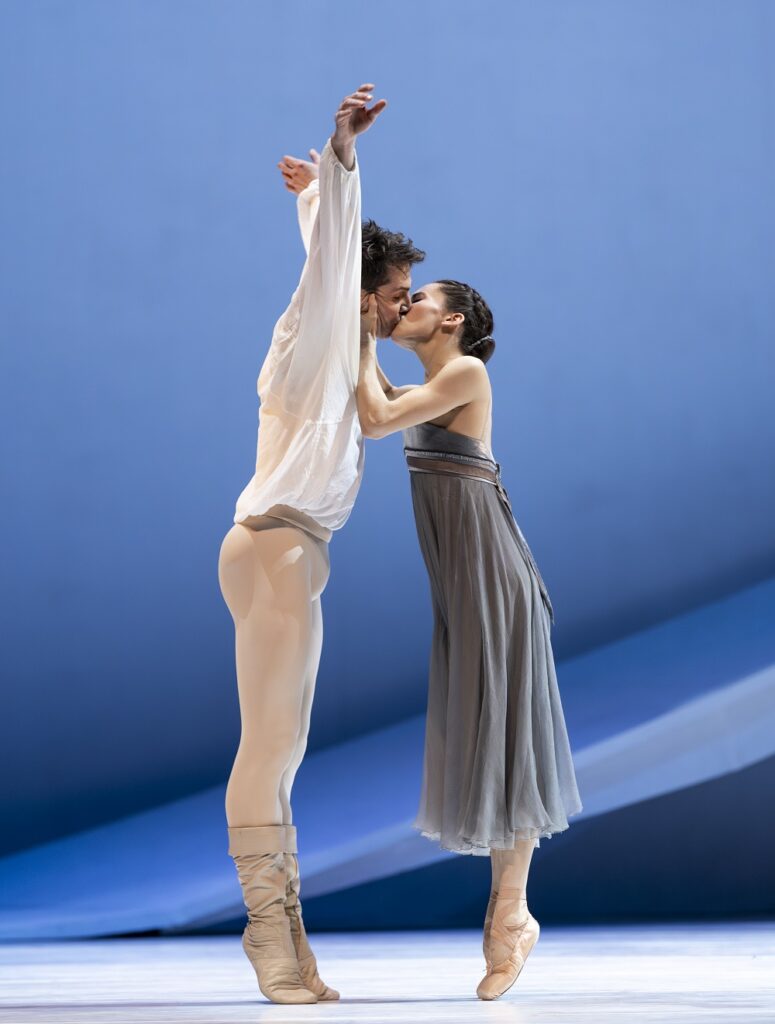
Pacific Northwest Ballet principal dancer Lucien Postlewaite and soloist Clara Ruf Maldonado in Jean-Christophe Maillot’s Roméo et Juliette – Photo by Angela Sterling.
The act unwinds with the set moving and slashes of light glowing over the body. The Nurse Sarah-Gabrielle Ryan comes to find Juliet’s lifeless form. The time allowed to discover, and register understanding is sensitive and caring. The way she picks up Juliet’s arm, the way she turns away is honest and moving. Ryan takes the time for recognition, and it becomes a miracle of discovery. When Lady Capulet enters and spreads her darkness, shrouding her hood over her head and face, she retreats, transitioning to Romeo, and brings him discovery of his love’s lifeless body. At that moment it feels almost voyeuristic, viewing the end of such an intimate unfolding, and the end of love and future.
This kind of work is so important in the arts today, in that it reveals the humanity of love and conflict. This truly beautifully crafted work needs to be experienced. Congratulations to PNB, and those who made this quality work of art. This cast, the creators, the support, the nuances, the treatment of a classic, that could have been mechanically done, came with new ideas, new feelings and new brilliance. A true work of art to be appreciated and treasured forever.
For more information about Pacific Northwest Ballet, please visit their website.
Written by Joanne DiVito for LA Dance Chronicle.
Featured image: Pacific Northwest Ballet soloist Clara Ruf Maldonado and principal dancer Lucien Postlewaite in Jean-Christophe Maillot’s Roméo et Juliette – Photo by Angela Sterling.

